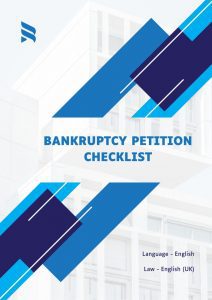Are you teetering on the brink of financial ruin, the weight of insurmountable debt bearing down upon you like a suffocating weight? Bankruptcy may offer a lifeline in the stormy sea of financial distress, providing a path towards redemption and renewal.
In this blog post, we embark on a journey through the realm of bankruptcy in the UK, shedding light on what to expect and how to prepare for this daunting but potentially liberating process.
Bankruptcy is more than just a legal process; it’s a second chance at financial freedom.
It allows individuals to be discharged from most of their debts, providing them with a fresh start financially.
However, it’s essential to approach bankruptcy with caution, as it can have long-term consequences for your credit rating and financial future.
Before declaring bankruptcy, you should consider alternative debt solutions and seek advice from a qualified debt advisor.
If bankruptcy is indeed the best option for your situation, you’ll need to file a Bankruptcy Petition with the court.
This petition serves as your official declaration of insolvency, setting the wheels of the bankruptcy process in motion.
To help you navigate the complexities of bankruptcy effectively, we’ve prepared a comprehensive template outlining the necessary information and documentation required for filing a Bankruptcy Petition.
This template serves as a beacon of guidance, illuminating the path towards financial redemption and renewal.
However, we urge you to remember that bankruptcy is not a decision to be taken lightly.
It’s essential to seek legal advice before proceeding, ensuring that you fully understand the implications and consequences of this significant financial step.
With knowledge as your compass and guidance as your anchor, you can navigate the stormy seas of financial distress and emerge stronger, wiser, and ready to embrace a brighter financial future.




